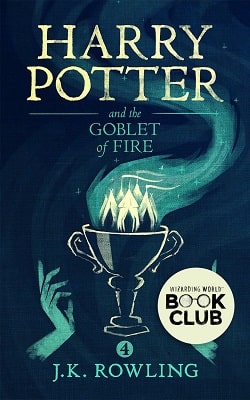“And I’d like to have you. But I thought you were going-”
“No. That’s not happening. I’m a cop.”
“No, you’re not,” Harris said.
What-? Payne thought.
Harris went on: “Matt, at the risk of inflating what already might be an oversize ego, you were a damn good detective. Now you’re a sergeant-a supervisor. And I sure could use you on this job-if, that is, I get it.”
Payne nodded once. “Thanks, Tony. That means a lot coming from you.” He paused, then added, “Bari’s going to get this job?”
Harris shrugged.
Harris then watched as Payne reached for his cellular phone, scrolled the list of names, then hit CALL.
“Good morning, Captain Hollaran,” Matt said when the call was answered. “Matt Payne. How are you, sir?”
Captain Francis X. Hollaran was assistant to First Deputy Commissioner Dennis V. Coughlin, the second in command of all of the Philadelphia Police Department. Commissioner Coughlin had been the one to order the overworked and overstressed Sergeant Matthew M. Payne, who was his godson, “Matty, you’re taking some time off. Thirty days. You’ve earned it, you deserve it-and you need it.”
Payne said into his cell phone: “Thank you, Captain. I appreciate it. I do feel better. Would it be possible to speak with the commissioner when he gets in?”
He glanced at his wristwatch, then said: “He’s in already? Then yes, please. Tell him I’m on my way to the Roundhouse, and I need ten minutes of his time.”
Payne paused to listen, then, making eye contact with Tony Harris, added, “Of course you can give him a heads-up what it’s about. Tell him my thirty-day R and R officially ended with a boom a few hours ago. I’m coming back to work.”
THREE
Reading Terminal Market Center City, Philadelphia Wednesday, September 9, 7:45 A.M.
In a crush of rush-hour commuters, twenty-one-year-old Juan Paulo Delgado stepped off the Southeastern Pennsylvania Transportation Authority’s R1 “Airport Line” railcar at the Market East Station. He followed a half-dozen of the commuters as they one by one passed through the Eleventh Street exit’s revolving door. On the sidewalk, El Gato pulled up the hood of his sweatshirt, covering his head against the rain that was starting. Two women in business attire and sharing an umbrella walked past, and he trailed them to Filbert Street, then into the Reading Terminal Market.
El Gato had boarded the SEPTA regional railroad at the Thirtieth Street Station, which was about a mile to the west, just across the Schuylkill River. And it had been into that dark river, from the tree-lined eastern shore under the Thirty-fourth Street bridge, that thirty minutes earlier he’d unceremoniously dumped the headless body of Ana Maria Del Carmen Lopez.
In the back of the rusty white Plymouth minivan, he had put her remains into a fifty-gallon black plastic lawn care bag and tied to the outside, around her ankles, a pair of twenty-five-pound workout dumbbells. Then he had poked a few holes in the bag to vent any trapped air. Once in the water, the bag had floated half-submerged with the river current for less than a minute, air bubbling out the vent holes. Then, when the bag had sufficiently filled with water, it had slipped toward the river bottom, a final series of bubbles popping on the surface.
El Gato then had rinsed off the blood from his hands with river water and thrown his bloody black clothing into the brush, behind a cardboard box long ago vacated by a homeless person. He’d driven the half-mile to the Thirtieth Street Station, and there carried a backpack into the men’s room. After cleaning up at a sink, he’d gone into a toilet stall. He had removed his gun from the backpack, run its sling over his right shoulder, then pulled on a clean hoodie sweatshirt and, over that, a cheap navy blue vinyl raincoat. Finally, he rolled up a Philadelphia Eagles ball cap and slipped it into his pants waistband at the small of his back.
The polymer-and-alloy weapon was a Belgian-made Fabrique Nationale submachine gun, Model P90, capable of firing nine hundred 5.7-? 28-mm rounds per minute, though its magazine held only fifty rounds. It was of a bullpup design, the action and magazine behind the trigger allowing for a shorter weapon with a barrel of equal length and accuracy as that of a longer gun. At just under twenty inches long, the P90’s futuristic styling resembled something right out of a science-fiction movie.
He’d taken the gun off the hands, quite literally, so to speak, of a former business associate in Texas, who had acquired it in Nuevo Laredo from a low-level member of the Zetas, the paramilitary enforcement arm of the narco-trafficking Gulf cartel. Despite the P90 having been a prized possession, the former associate had had no further need of it. El Gato, in a crack house in South Dallas, agreed to the associate’s offer of the weapon as collateral against the unpaid debt he owed El Gato for a kilogram brick of sticky black tar heroin. Then El Gato pulled his pistol and shot the associate dead. Or, more accurately, shot up the associate. First with the nine-millimeter pistol, then with the P90. The burst of forty rounds was meant to send a message to others who might consider shorting El Gato.
After he followed the businesswomen into the Reading Terminal Market, the heavy metal door slammed shut behind him.
Juan Paulo Delgado reached inside his raincoat and pulled up on the right side of his sweatshirt. He readied the P90 while keeping it concealed under the raincoat.
Tricia Hungerford Wynne-an attractive fair-skinned blonde of twenty-two years who stood a slender and athletic five-foot-ten-waited patiently in Reading Terminal Market. Tricia, whose family could trace their lineage back to Dr. Thomas Wynne, William Penn’s personal physician and one of Philadelphia’s settlers, was a Swarthmore College senior about to graduate early with a degree in education.
As a teacher-in-training at West Catholic High School, she had already begun what she considered a life of influencing future generations. And it was for that noble cause that she stood on line five back at the busy glass display counter of Beiler’s Bakery. Beiler’s sold homemade Amish delicacies only on Wednesdays through Saturdays (no later than five-thirty each day, three o’clock on Saturday), and she’d come to pick up the shoofly pie she’d ordered. Tricia taught a cultural diversity class for West Catholic freshmen, and today’s emphasis was on the peaceful Amish of Lancaster County.
I should bring some scrapple, too, she thought, grinning mischievously.
Just to watch the boys turn green as they read aloud all the parts of a pig listed in the ingredients.
The Reading Terminal Market had opened in 1893 as a farmers’ market. The massive riveted steelwork of the onetime Reading Railroad train shed now housed nearly a hundred merchants. The shops and restaurants were laid out on a grid, boxed in by Twelfth Street to the west, Eleventh to the east, Arch on the north, and Filbert to the south.
Like every day Tricia could remember, the market was packed. Locals came regularly from their Center City offices; City Hall, with its statue of Willy Penn standing atop, was but blocks way. And tourists poured in from the nearby Marriott and Hilton Hotels and the Philadelphia Convention Center.
And for very good reason, Tricia thought.















